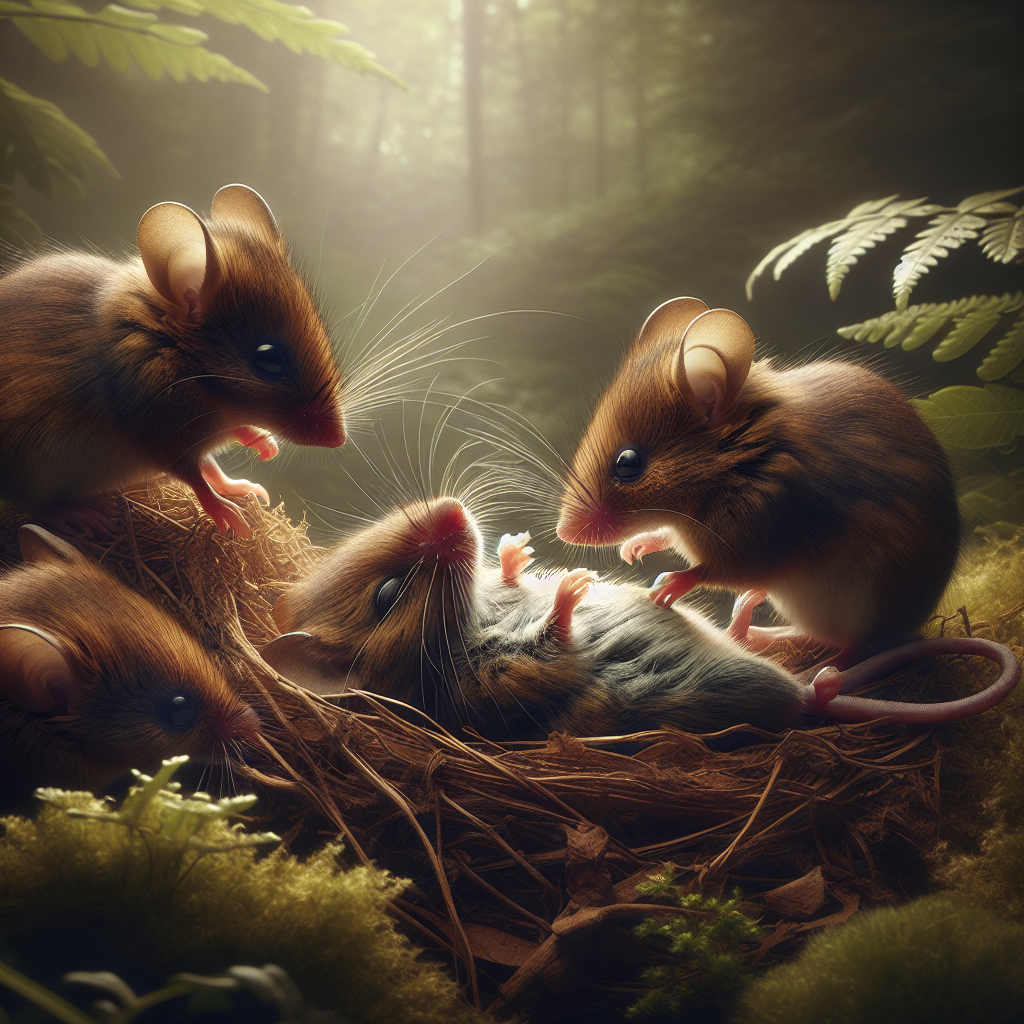
Mice’s Remarkable ‘First-Aid’ Instinct: Unmasking Their Astonishing Revival Behaviors
The Intriguing World of Mice: Natural First Responders
Mice, often underestimated for their intelligence and social behaviors, have been discovered to possess an incredible instinct to help their companions in distress. This recent scientific revelation unravels the fascinating behaviors of mice, further underscoring how diverse and intricate the animal kingdom truly is. When a mouse becomes unconscious, these tiny creatures will engage in what appears to be a form of ‘first-aid’ aimed at reviving their fellow rodents. This groundbreaking discovery adds another layer to our understanding of animal behavior.
Unveiling the Study: Experiments in Animal Behavior
The intriguing behaviors of nurturing in mice were thoroughly studied and described by researchers, as published in the prestigious journal Science. Mice were observed attempting to revive unconscious companions through a series of behaviors such as face-licking and tongue-pulling. The researchers noted that more vigorous grooming correlated with faster recovery in the stricken mice.
Documenting the Resuscitative Actions
- The mice engaged in face-licking and tongue-pulling of unconscious peers.
- More aggressive behaviors were noted among mice that had spent significant time together.
- The behaviors were not limited to visual cues, as mice detected unconscious states even in darkness.
These nurturing actions, instinctive in their essence, were correlated with swift recovery of the unconscious mice. Examining such untrained, spontaneous actions provides invaluable insights into the empathetic responses observed in various animal species.
The Evolutionary Instinct: Mind or Matter?
Wenjian Sun, the study’s lead author from the University of Southern California, highlighted the significance of these findings, describing them as the first documented evidence of resuscitation-like behavior in naïve mice. However, a question persists: are mice acting out of conscious intent to help, or are these actions purely instinctual?
“We do not exclude the possibility that the animal is simply driven by instinctive impulses to perform these actions,” Sun notes. While mice’s instincts may not mirror human conscious intent, these behaviors hint at evolutionary roots shared across species.
Comparisons Across the Animal Kingdom
Other species, including dolphins, elephants, and non-human primates, have exhibited behaviors aimed at assisting injured or sick group members. Notable actions in these animals often include touching, grooming, and nudging.
However, the specific actions observed in mice, such as tongue-pulling, were unique in their context. Previous studies have scarcely documented such distinctive behaviors, making this discovery particularly enlightening.
Oxytocin: The Love Hormone at Play
A deeper dive into the neurological underpinnings revealed oxytocin’s role in driving these behavior patterns. The same edition of Science introduced another study that explored the neuronal mechanisms behind grooming behaviors in mice.
- Inactivation of oxytocin neurons diminished the observed helpful behaviors.
- Blocking oxytocin receptors suggested its crucial role in rodents’ emergency responses.
Oxytocin, often associated with trust and affection in humans, appears instrumental in promoting social bonding and instinctual responses in mice. Viewing these actions through the lens of hormonal influence offers crucial insights into potential evolutionary parallels with human behavior.
Implications and Future Directions
These discoveries shed light on complex networks of animal behaviors that extend beyond simple survival mechanisms. Understanding the instinctive capacities in animals — and their potential connections to human evolutionary behavior — drives us towards broader horizons in both the biological and psychological sciences.
Future research aims to uncover the specific neural circuits involved in these compassionate feats observed in mice, exploring the larger implications within the tapestry of mammalian brain structures.
Conclusion: A Broader Perspective on Animal Empathy
The compassionate actions of mice highlight the intricate, often undervalued, moral infrastructure present in the animal kingdom. As scientists unravel these remarkable behaviors further, they bring us one step closer to illuminating the full capacity of empathy shared across sentient beings. This research invites a reflection on the breadth of social empathy and the profound instincts residing within the natural world.
Source: https://www.livescience.com/animals/land-mammals/mice-administer-first-aid-to-friends-even-trying-to-bring-the-dead-back-to-life

